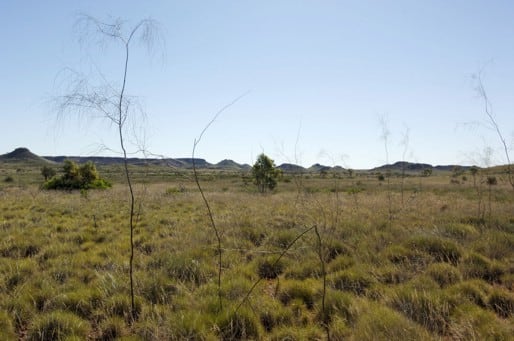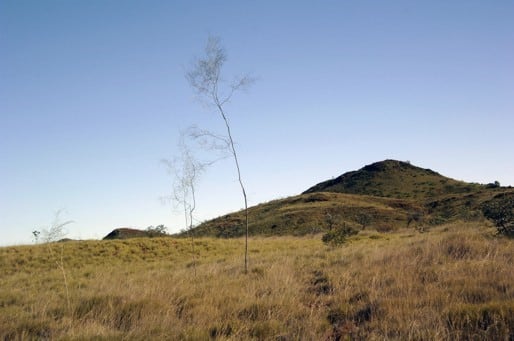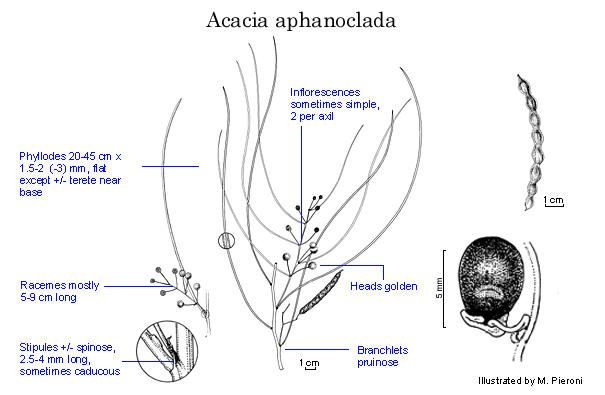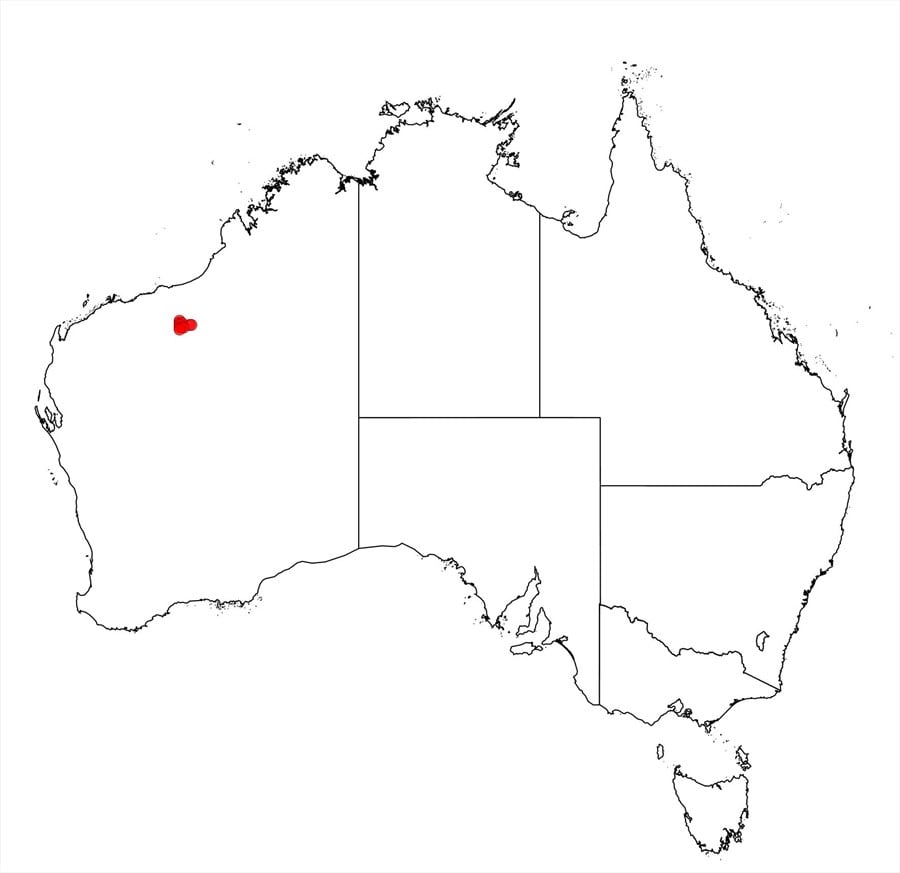Acacia aphanoclada Maslin
WATTLE
Acacias of Australia
Common Name
Nullagine Ghost Wattle
Family
Fabaceae
Distribution
A rare species known only from near Nullagine, north-western W.A.
Description
Wispy glabrous shrub 3–6 m high, crown sparse, the terminal branches with tendency to droop. Branchlets very slender, pruinose. Stipules ±erect, ±spinose, sometimes absent, 2.5–4 mm long. Phyllodes narrowly linear, ±terete near base otherwise flat to compressed, (10–) 20–45 cm long, 1.5–2 (–3) mm wide but on sucker regrowth they may reach up to 10 mm across, acuminate, sometimes pungent (the points normally break off with age), flexible; midrib not prominent; gland 2–6 mm above base. Inflorescences racemose, occasionally simple; raceme axes 5–9 (-18) cm long; peduncles mostly twinned, 1–2 cm long, slender, with caducous bract above middle; heads globular, densely 70–90-flowered, golden. Flowers 5-merous; sepals free, narrowly spathulate. Pods narrowly oblong, straight-edged or constricted between seeds, 6–7 cm long, 6–8 mm wide, ±firmly chartaceous, pruinose at least when young. Seeds ±longitudinal, oblong to widely ovate or almost globose, 4–5 mm long, ±dull, brown, often yellowish near pleurogram; aril ±clavate.
Phenology
Flowers Aug.–Oct.
Habitat
Grows on rocky hills (of mostly Mosquito Creek geological sediment and conglomerate) in spinifex (Triodia sp.) country with scattered Eucalyptus sp. and Acacia sp.
Specimens
W.A.: 9 km S of Nullagine, A.S.George 15716 (MEL, PERTH); c. 5 km N of Nullagine on Great Northern Hwy, B.R.Maslin 4957 (NSW, PERTH).
Notes
The stipules and phyllode apices are slender and often ±pungent, but they are brittle and, on the phyllodes especially, commonly break off with age.
Readily distinguished from other members of the ‘A. victoriae group’ by its characteristic wispy habit comprising very slender, single stems (to 2 cm d.b.h.) and open crowns with very long, narrow, pendulous phyllodes. These characters are similar to those of A. araneosa, a member of the ‘A. microbotrya group’ from the Flinders Ra., S.A., and A. spectra from the Kimberley region, W.A. Acacia aphanoclada occasionally hybridizes with A. pyrifolia var. pyrifolia (see A. aphanoclada × pyrifolia var. pyrifolia).
FOA Reference
Data derived from Flora of Australia Volumes 11A (2001), 11B (2001) and 12 (1998), products of ABRS, ©Commonwealth of Australia
Author
Edited by B.R.Maslin
B.R.Maslin
This identification key and fact sheets are available as a mobile application:
URL: https://apps.lucidcentral.org/wattle/
© Copyright 2018. All rights reserved.










